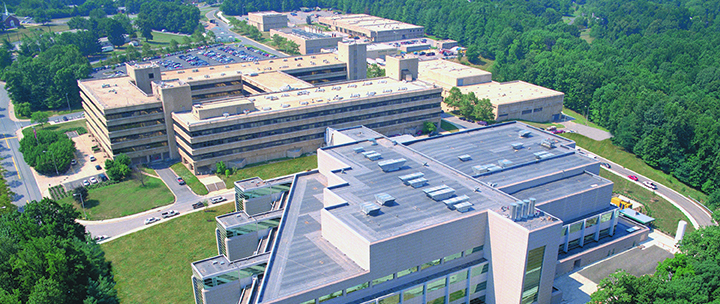
Army Research Laboratory complex
WASHINGTON: While the rest of the Army works on new hypersonic missiles, robotic mini-tanks, and ultra-high-speed helicopters, the Army Research Office is diving deep into the submicroscopic world of nanotechnology and quantum mechanics.
The military is intensely interested in the potential to improve the costs and capabilities of its electronics, which in modern warfare are as vital to survival as guns and armor. But as with the Internet, radar, and other originally military technologies, there are civilian applications as well.
Carbon Nanotubes
One Army Research Office project is looking to replace traditional silicon-based semiconductors with more efficient carbon nanotubes, program manager Joe Qiu told me. The new technology is particularly useful at the very high frequencies (30-plus gigahertz) and very short wavelengths (millimeter wave) that the telecommunications industry wants to use for 5G networks – including on military bases – and for whatever replaces 5G.
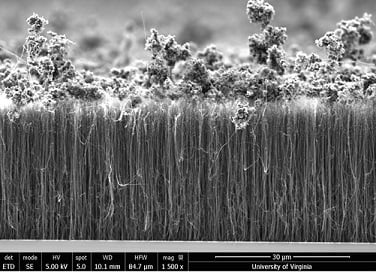
Carbon nanotubes. (University of Virginia photo via National Nanotechnology Initiative)
“The initial deployment of 5G, they will be lower than six gigahertz, but there are plans…to improve frequencies to 28 GHz and higher,” Qiu said. “It’s not just 5G — it’s beyond 5G.”
How soon could the private sector reap the benefits of ARO-funded research?
“Commercial use of carbon nanotube-based integrated circuits? Maybe five years,” he said, then added with a laugh: “That’s an estimate. Don’t hold me to that!”
This kind of research can take a long time to bear fruit, Qiu cautioned. Army funding actually helped get the ball rolling on carbon nanotubes for electronics 10 years ago, he said, and it’s taken that long to work out the kinks.
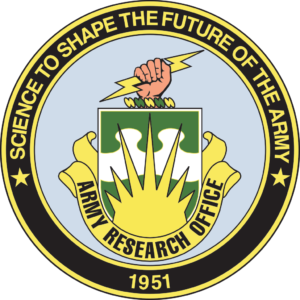
Army Research Office seal
It was mathematically proven a decade ago that nanotubes could channel electricity much more efficiently, Qiu told me. While silicon semiconductors form a lattice that lets electrons scatter in all directions – imagine downtown traffic moving through a grid of streets – carbon nanotubes essentially act like a highway that funnels all the electrons in the desired direction. (The technical term is quantum ballistic transport). But actually producing enough nanotubes of consistent size and quality and getting them to line up right took years of further work, much of it Army funded.
Last year, under a Small Business Technology Transfer (STTR) grant from ARO, the University of South California and venture-backed startup Carbonics Inc. developed working carbon nanotube transistors. The next big step is to integrate many transistors together into an actual circuit. Then, Qiu said, you can talk about integrating many circuits together to build actual equipment.
That would be a job for other parts of the Army. “The Army Research Office, our core mission actually is investing in basic science,” Qiu emphasized. ARO is just one piece of the Army Research Laboratory, which is in turn part of Combat Capabilities Development Command (formerly RDECOM), which is in turn one of the three major components of Army Futures Command, created in 2018 to coordinate all aspects of modernization from brainstorming futuristic concepts to fielding new equipment.
At ARO, said one of Qiu’s colleagues, Joseph Myers, “we’re a bunch of program managers here who support basic research [that’s] likely to lead to advances in a variety of different technologies.”
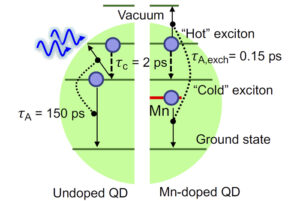
Diagram of a “quantum dot”
Quantum Dots
While the Chinese-born, US-trained Qiu is a physicist-turned-engineer-turned-program manager, Myers is a mathematician and head of the mathematical sciences division at ARO – a field, he jokes, notoriously disconnected from mundane reality. Qiu’s carbon nanotubes are a fraction of the size of a single human hair. Their lengths vary widely, but their thickness is typically six nanometers or less. Myers is funding research on quantum dots, miniscule crystals of semiconductor whose longest dimension is no more than six nanometers, meaning they could conceivably fit inside a nanotube.
Extremely small size allows extremely fine precision. When energized, a quantum dot will always emit a very specific wavelength (which wavelength depends on the dot’s exact size). They also emit these precise frequencies more powerfully, for a longer time, than traditional semiconductors. Some companies already sell high-end “quantum LED” TV sets that use this property to produce more vivid colors: You can even get one at Best Buy.
The downside, Myers went on, is that it’s much harder to design electronics using quantum dots. Classical models of physics start to fail as you start to enter the strange domain of quantum mechanics, where seemingly solid objects turn into fuzzy fields of energy that can pulse and jump in unpredictable ways. Unlike traditional electronics that use electrical charges to represent 1s and 0s, “the physics of what’s going on isn’t as clean as zero/one anymore,” he said. “It’s got some probability of being a zero, some probability of being a one.”
To predict those probabilities precisely, using current techniques, is arduous and slow. “We largely know the equations, but the equations are just too intractable to solve exactly,” Myers said. “If you’ve got the age of the universe… you can maybe complete one of the calculations.”
“You want to do it in less than one human lifetime,” he said. “You want to do it in a day or two, or a week or so, or maybe even a few hours.”
So how much precision can you safely give up to get your results fast enough to actually use them?
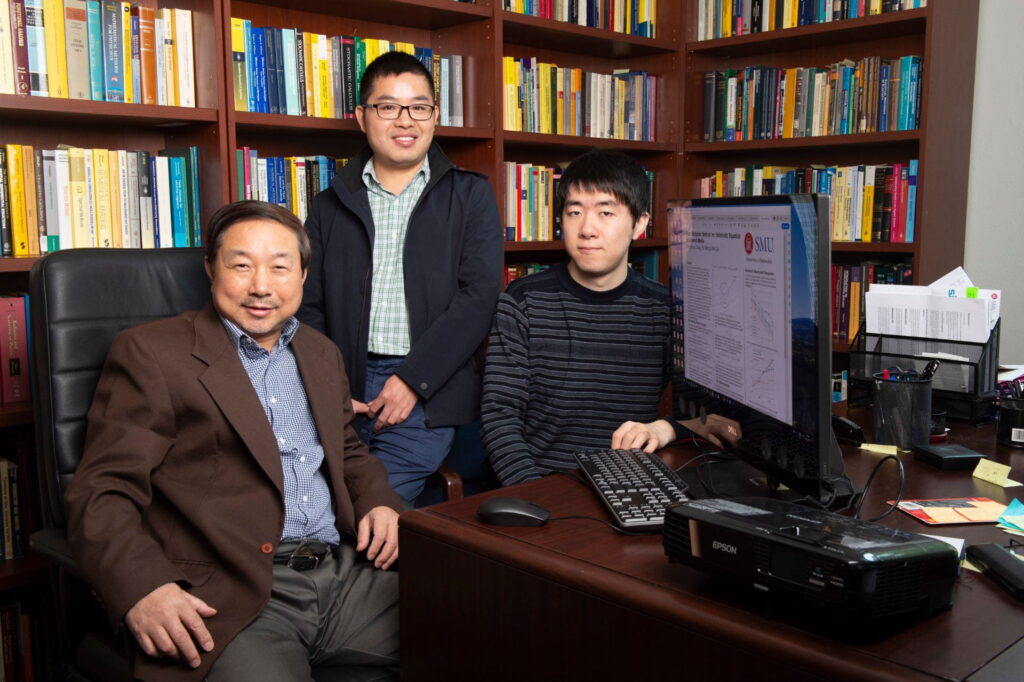
SMU researcher Wei Cai and his team.
Myers funded work by Southern Methodist University professor Wei Cai, who’s figured out a streamlined modeling technique, using an old Air Force supercomputer that Myers managed to get transferred to SMU before it was scrapped. (The Pentagon has a standing High Performance Computer Modernization Reutilization Program to pass on its older machines.)
Put simply (very, very simply), Cai has figured out which parts of the traditional models tend to have such a miniscule impact on the final result – about 0.000000001 percent – that you can safely ignore them. Then you can just do the calculations that actually matter.
Cai’s technique is 750 times faster than rival approaches, Myers said proudly. In its current form, he cautioned, it is still wrong about 20 percent of the time, but Cai is working on that – he’s likely to apply for further Army funding this year – and in the meantime there are ways to double-check the results.
What kind of improved technologies could you use Cai’s model to design? Besides the QLED televisions already on sale, Myers said there’s interest from multiple parts of the Army Research Laboratory that work on everything from solar panels – a useful complement to fuel-hungry diesel generators and heavy lithium-iron batteries – to military sensors and other electronics. There’s a potential medical application in improving CT scans, as well, which is potentially life-changing not just for civilians but for survivors of skull-rattling roadside bombs.
Congress and good-government watchdogs often wonder, with good reason, about oddball research projects that slip into the Pentagon budget with no clear connection to any military purpose. Then-undersecretary of the Army, Ryan McCarthy – now the secretary – was widely praised in 2017-2018 when he overhauled the service’s science & technology portfolio to cull low-payoff projects and focus 80 percent of investment on the service’s Big Six modernization priorities. But McCarthy was also very careful to leave 20 percent to continue basic research, unconstrained by near-term needs, to sow the seeds of real long-term breakthroughs.
Edited Wednesday morning to correct the origin of the supercomputer transferred to SMU: It is a former Air Force computer, not an Army Research Laboratory one as stated in the original versions of both this article and the Army press release from which Breaking Defense got that information.
Connecticut lawmakers to grill Army, Lockheed about job cuts at Sikorsky helicopter unit
“The Connecticut delegation has questions about why, with that [FY24] appropriation in hand, this happened,” said Rep. Joe Courtney, D-Conn.


























